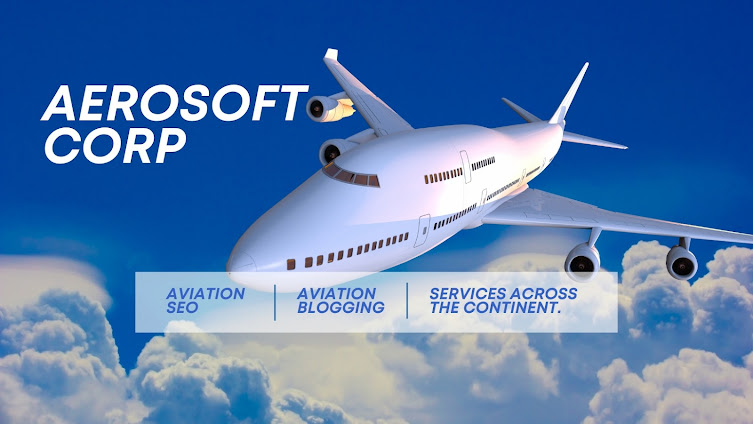The Art and Science of Airport Identification for Pilots ✈️🌐
Navigating the Skies:
The Art and Science of Airport Identification for Pilots ✈️🌐
Greetings Community!
Today, let's delve into the fascinating world of aviation and explore a question that often piques curiosity: How do Pilots know where the Airport is? 🤔✈️
As we witness the marvel of modern Air travel, it's easy to take for granted the precision and skill required for Pilots to navigate the vast skies and safely land at their intended destinations. Airport identification is a critical aspect of this process, and it involves a combination of traditional navigation techniques, cutting-edge technology, and a deep understanding of the aviation environment.
🛰️ Global Navigation Satellite Systems (GNSS): One of the primary tools in a Pilot's arsenal is the use of GNSS, which includes systems like GPS. By receiving signals from satellites orbiting the Earth, Pilots can pinpoint their exact location in real-time. This technology provides an accurate and reliable means of determining the Aircraft's position relative to the Airport.
🔍 Radio Navigation Aids:
Pilots also rely on a network of ground-based radio navigation aids. These aids include VOR (VHF Omni-directional Range) and NDB (Non-Directional Beacon) stations. VORs provide radial information that helps Pilots establish a specific course to or from the station, while NDBs emit signals that help Pilots determine their position relative to the beacon.
🗺️ Flight Charts and Navigation Instruments: Pilots use a variety of charts and instruments to visualize their route and identify key landmarks, including the Airport. Instrument Landing System (ILS) charts, for example, provide detailed information on approach and landing procedures, ensuring a smooth descent and touchdown.
🌐 Communication with Air Traffic Control (ATC):
Effective communication with ATC is paramount. Pilots maintain constant contact with Air traffic controllers, who provide vital information, including updates on weather conditions, traffic in the vicinity, and precise instructions for approaching and landing at the Airport.
👨✈️ Pilot Training and Experience:
Last but certainly not least, the extensive training and experience of Pilots play a crucial role. Pilots undergo rigorous training to develop their navigation skills, including simulated scenarios that challenge their ability to identify Airports under various conditions. This practical experience enhances their confidence and competence in real-world situations.
Navigating the Skies: How Pilots Safely Locate Airports
Flying an Airplane is a remarkable feat that demands a combination of skill, knowledge, and reliance on advanced technologies. Among the myriad challenges faced by Pilots, a fundamental aspect is the ability to accurately locate and approach Airports for a safe landing. In this post, we'll explore the various methods and technologies that Pilots employ to ensure they always know where the Airport is.
1. GPS (Global Positioning System):
A cornerstone of modern aviation, GPS provides Pilots with precise and real-time information about their Aircraft's position, speed, and direction. This satellite-based navigation system is particularly invaluable when flying over vast expanses of land or water where visual references are limited. Pilots can plan their routes and navigate through the skies by following a series of waypoints, ensuring a seamless and accurate approach to their destination.
2. Radio Navigation:
Pilots utilize radio signals from ground-based stations or beacons for navigation. Systems such as VOR (Very High Frequency Omnidirectional Range), DME (Distance Measuring Equipment), NDB (Non-Directional Beacon), and ILS (Instrument Landing System) provide essential information about the Aircraft's location and direction. These radio navigation aids play a crucial role, especially during adverse weather conditions when visibility may be compromised.
3. Visual Flight Rules (VFR):
When weather conditions permit, Pilots rely on Visual Flight Rules (VFR). This set of procedures enables Pilots to navigate by visually identifying landmarks, terrain features, and other visual cues. VFR is particularly common for smaller Aircraft operating at lower altitudes and speeds. However, it is important to note that VFR is not suitable for flying in challenging weather conditions or low visibility scenarios.
4. Air Traffic Control (ATC):
A pivotal element in ensuring safe Air travel, Air Traffic Control (ATC) provides essential communication, information, and assistance to Pilots throughout their journey. ATC controllers, stationed in towers, centers, or facilities, use radar, radio communication, and advanced technology to monitor and manage Airspace around Airports. They play a crucial role in guiding Pilots, providing clearances, and disseminating critical information to enhance situational awareness.
Pilots employ a diverse array of methods and technologies to pinpoint the location of Airports and execute safe landings. Mastery of these techniques is imperative for Pilots, as they navigate through diverse and dynamic conditions. Whether it's the precision of GPS, the reliability of radio navigation, the clarity of visual flight rules, or the guidance of Air traffic control, each element contributes to the intricate dance that ensures safe journeys through the skies.
The seemingly effortless arrival of an Aircraft at an Airport is the result of a complex and well-coordinated interplay of technology, navigation aids, communication, and the skillful expertise of Pilots. The next time you find yourself aboard a flight, take a moment to appreciate the intricate ballet happening in the cockpit as your skilled Pilots navigate the skies and bring you safely to your destination. ✨✈️
If you find this post insightful, feel free to share and spread the knowledge. Your upvotes and comments are always appreciated! Wishing you all safe travels and blue skies ahead.
Shekhar Gupta
Asiatic International Corp
Products
Our Service
.jpeg)
Online Airline Career Counselling
Online Airline Career Counselling and Books orchestrated by Captain Shekhar Gupt... Show more

Online Airline Career Counselling
Online Airline Career Counselling and Books orchestrated by Captain Shekhar Gupt... Show more
.jpeg)
Counselling For Airline Pilot Training
Airline Pilot Training By Capt Shekhar Gupta Author / Pilot Pilot's Career... Show more
Gallery
Payment QR















.jpeg)


.jpeg)



.jpeg)





No comments:
Post a Comment